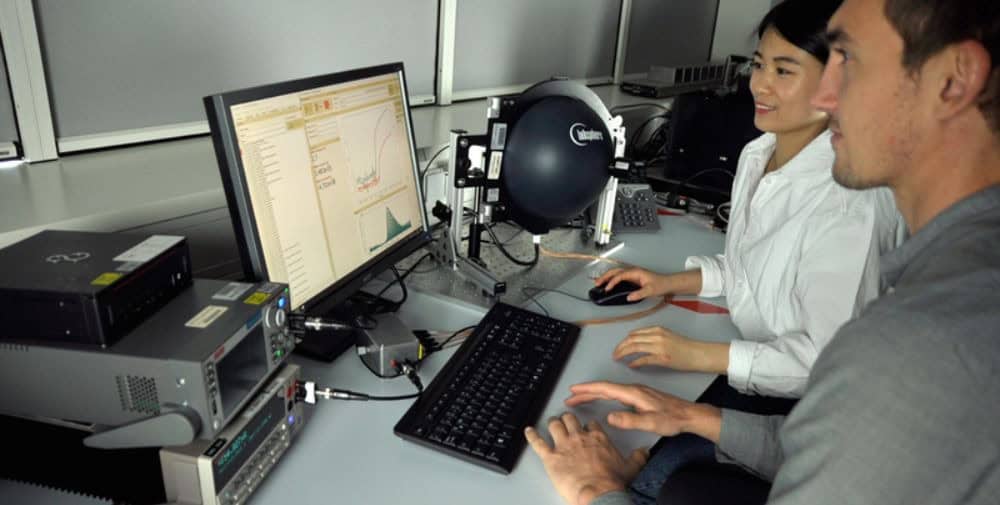
When production plant managers plan the digitization of a factory, they often mistakenly and quite idealistically think of all the changes that an introduction of Industry 4.0 solutions promises. However, before you start digitizing according to your dream vision, you should first ask yourself the following important question: Why focus all your efforts on this endeavor and not on other goals?
Since 2014, the European Commission has been monitoring the state of digitization in member states, with progress recorded in the Digital Economy and Society Index (DESI) reports published annually. Germany ranks eleventh among the 27 member states in the DESI 2021. While Germany performed relatively well in broadband connectivity and 5G readiness, there is extreme catching up to do in other areas. For example, less than a third of companies (29%) exchange information electronically, and only 18% of SMEs issue electronic invoices. Hardly any improvements have been made in these two areas in recent years, and the need for digitization will continue to grow in the coming years.1
Despite all this, one should not succumb to the vision of the future of an ideal smart factory that is available immediately, nor should one strive for rapid full automation of production processes. Rather, it is advisable to choose a strategic approach.
Industry 4.0 – step by step
Determining problems and assessing their extent
The first step on the way to digitizing a factory should always be to map out the existing problems in the plant. Key processes and tasks that require improvement should be noted. Then, the extent of each identified problem should be assessed to estimate what level of optimization is actually required. Below are some examples of potential problems and corresponding suggestions for assessment methods.
- Is the administrative burden in operations too high (especially paperwork)? Determine who re-enters all data from analog production reports manually in an ERP system and how much time is needed for this per day.
- Do errors occur frequently in documents? Check in which documents errors occur, how often they occur, by whom their correction is taken over and how much time is needed for this.
- Has it happened that material has disappeared? Find out how much material is lost weekly, monthly, and annually, and what the value of the material is in each case.
By estimating the extent of each daily problem, it is easier to determine which are real problems and which are so sporadic that immediate intervention is not required. The information gathered will prove helpful in setting specific goals.
Observe and Map
When managing a factory floor, it is often completely unclear how much time is actually spent on data management – including seemingly simple tasks such as the ongoing maintenance of documents. Before you start setting goals for the digitization process, it is therefore important to observe and map existing procedures. On this basis, it is then much easier to derive how best to solve the problems identified.
The purpose of modeling business processes is to show how a system currently works and, in contrast, to highlight how it should work. Modeling gives you a comprehensive view of the flow and sequence of tasks during a given process, making it easier to catch errors or aspects that need to be optimized.
By using a model or mapping of a particular process, you can determine how much time is actually spent on a certain activity and to whom it is assigned.
Control performance with a dedicated application
If one of the problems of your plant is the low efficiency of a machine, it is worth using an appropriate Industry 4.0 solution (e.g. Comarch Industry 4.0). With its help, you can always check whether the machine is working, measure the production speed, and much more. The data collected by the application also provides specific information about production interruptions and their duration. By subjecting the data to appropriate analysis, it is easy to determine what losses have occurred due to the use of a given machine.
The same applies in the event that there is a production stoppage, but you do not know the cause. In such a situation, installing a special view for the machine operator can help (available as part of the Industry 4.0 application), through which the production worker can immediately find out the reason for the interruption.
Setting goals and implementing solutions
Only after problems have been precisely identified, their extent assessed, and relevant processes observed, can goals be formulated. Here, it is recommended to apply the universal SMART method, which allows you to easily define the specific, measurable, appropriate, relevant and scheduled goals you are aiming for.
If the biggest loss in your plant is due to the manual completion of production reports, first introduce an MES (Manufacturing Execution System; engl.: production control system) that automatically downloads the production orders from the ERP system (e.g. Comarch ERP Enterprise). The corresponding Industry 4.0 application from Comarch offers the possibility here of directly displaying relevant information to the person executing a process (i.e., which task to execute, how many repetitions to run through, and which procedure to follow). The processing progress, in turn, can be reported manually by the respective production employee via an intuitive touch screen or automatically by the machine. All data is then immediately transferred to the ERP system. As a result, the production manager has a continuous view of the status of a task, the quantity produced, and key production metrics.
To address the problem of material loss, the Comarch application includes a function for recording material consumption. On a screen next to the machine responsible for a particular operation, the production worker is shown a list of the materials required, with details of the quantities to be used. The worker records the actual material used by scanning the label of the batch in question and then entering other data (such as the quantity used) in the application. This data is stored in a database and transferred directly to the ERP system. This makes it possible to track at any time which material was consumed when, where and in what quantity.
If you have identified problems with quality control, the next step is to introduce the checklist module. This regularly assigns tasks to a responsible employee, such as measuring specific values or properties of a product or material. The corresponding measurement data can be stored directly and transmitted to an external quality management system, which significantly improves ongoing control.
By thus successively tackling all the problems you have previously identified and precisely named, following your defined strategy, you can – step by step – build your smart factory of the future.
If you would like to learn more about our IoT solutions, such as our Industry 4.0 application, visit our product page https://www.comarch.de/produkte/iot-ecosystem/industrie-40/.
1 European Commission, Digital Economy and Society Index (DESI) 2021, Germany, https://ec.europa.eu/newsroom/dae/redirection/document/80587
– – – –
Further links
👉 www.comarch.de
Photo: Comarch
.




